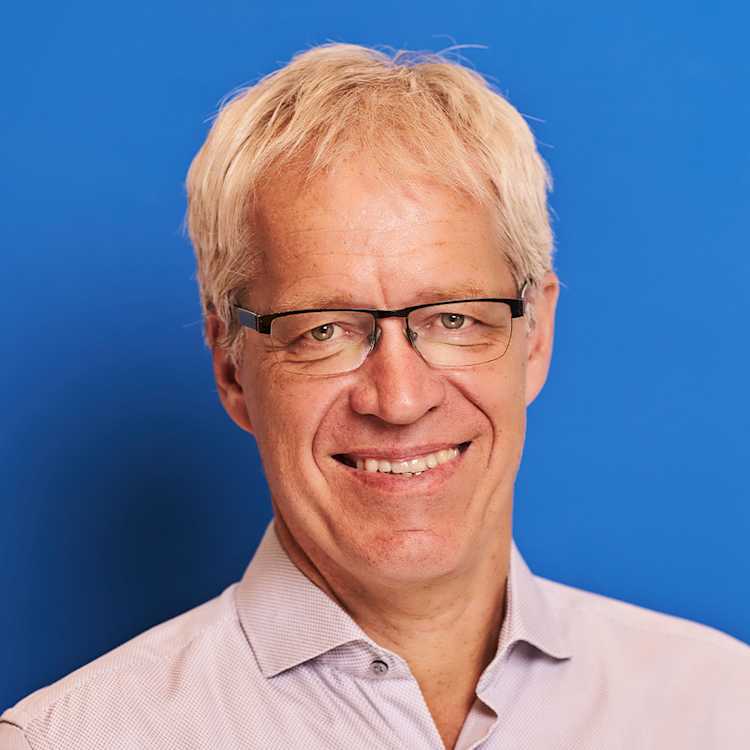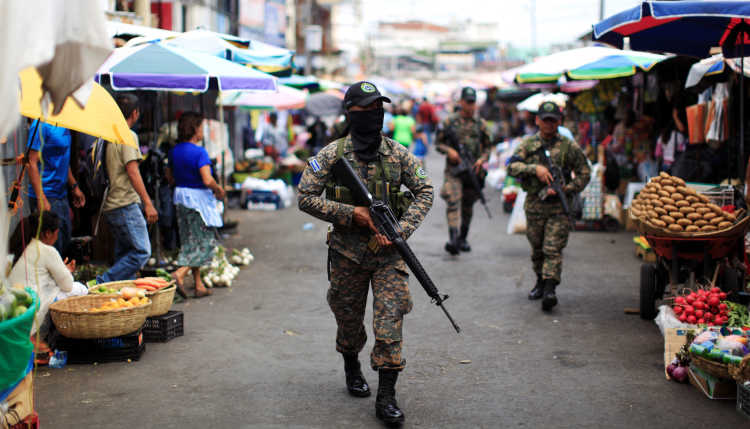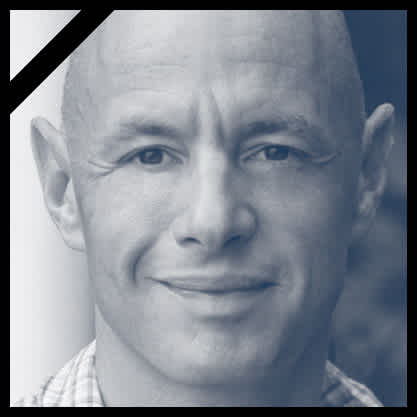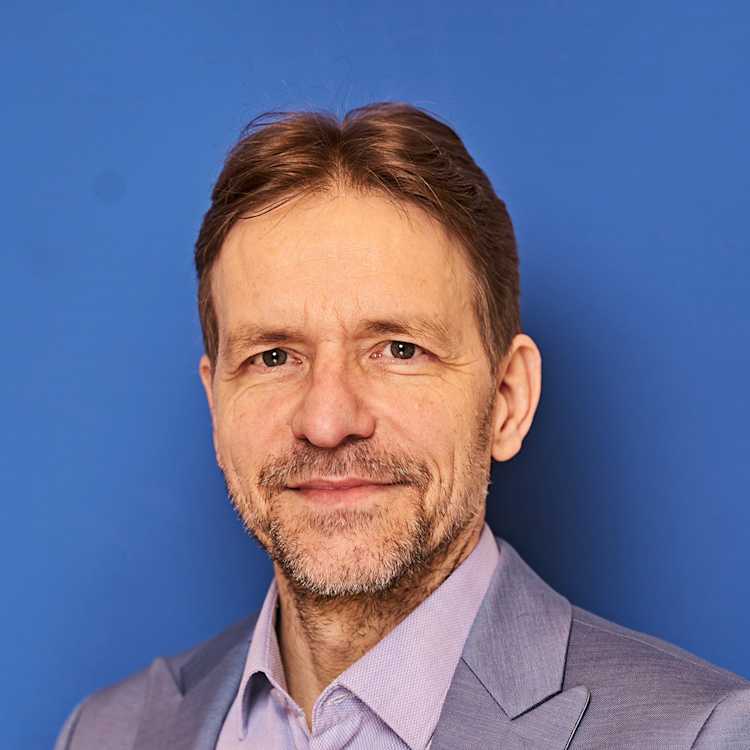- Home
- Publications
- GIGA Focus
- AMLO's First 100 Days: Mixed Signals
GIGA Focus Latin America
AMLO's First 100 Days: Mixed Signals
Number 2 | 2019 | ISSN: 1862-3573

Andrés Manuel López Obrador (AMLO) became Mexico’s president on 1 December 2018. Despite some signs of tension, 100 days later his approval rates surpass 80 per cent. It is too early to see signs of the transformation he proclaimed to start. Yet, his approach to solving Mexico’s toughest problems and his political communication style differentiate from previous governments.
The priorities for the new government – and those where voters expect delivery – are social policies and internal security.
While domestic and foreign investors are on edge after AMLO’s campaign assertions that he would backpedal on some of the reforms made by the previous government, the peso has been stable and his government has pledged to continue pursuing multilateralism and open markets. Still, anxieties among investors might affect the prospects of the Mexican economy just as much as the government’s actions do.
Migration is a complex phenomenon in Mexico, occupying the headlines for the last five months due to caravans hailing from Central America. Policies to deal with migration are undergoing change because of that. At the same time, migration is becoming a nodal point to connect the government’s plans for infrastructure development for the impoverished south of the country with its foreign policy projections in the region.
Despite fundamental change in other areas, the new government’s agenda so far has omitted concerns for gender equality, the environment, or the risks of the military gaining a stronger hold on the security apparatus.
Policy Implications
AMLO’s plans enjoy ample support, but his style bears mixed signals for democracy. As he seeks popular backing by both institutional and extra-institutional means, participation and accountability may grow at the expense of checks and balances. Internal and international actors should play a supportive role for this government’s aims, yet also to attentively check the methods used – especially regarding the implementation of social and internal security policies.
The Onset of a Transformation
The astounding victory – with 53 per cent of the vote – of Andrés Manuel López Obrador (AMLO) in the last presidential elections in Mexico, held on 3 July 2018, provoked a seismic change in the country’s political system. The incumbent Institutional Revolutionary Party (PRI) was ousted by electoral means, and the electoral force of other parties that had allowed it to govern and achieve far-reaching reforms (the National Action Party and Party of the Democratic Revolution) was also seriously damaged. In his five months as president-elect, under a “lame duck” Peña Nieto, AMLO sent further shock waves through the system. For instance, he announced the cancellation of the most important infrastructure project started by the previous government (Texcoco airport) and instead proposed several plans for other infrastructure ones of his own as well as consultation in survey-like exercises that lacked the backing of the national electoral authority. Prodigious expectations – positive and negative – have accompanied his taking of office, but after 100 days there is little concrete to be said about a definite direction to AMLO’s government – much less its accomplishments. He has promised nothing less than transformation, to pacify the country and to reduce deeply rooted inequality. So far, his government has focused on social policy and efforts to curb corruption and is having trouble tackling public security.
AMLO’s Style: Old Wine in New Bottles?
An analysis of the current government’s position towards democratic institutions must begin before it even took office. AMLO’s landslide triumph is also one of democratic elections as the channel for a peaceful yet radical change of political course – at least as groundbreaking as it can be in a country where most political parties aspire to occupying the centre of the political spectrum. AMLO’s style of addressing “the people” directly, seen on top of the comfortable legislative majority he enjoys with Morena (Movimiento Regeneración Nacional) and its allies (which obtained an absolute majority in both chambers of Congress), raises fears that he will concentrate power to the detriment of other powers and institutions, and that he could try to restore the clientelistic practices and strongman style of politics of the old PRI – the party with whom he started his career.
Yet, the political system that made it possible for AMLO to become president after two failed attempts is no longer the same as it was under the hegemonic rule of the PRI. In fact, the PRI government of Peña Nieto (2012–1018), with nefarious corruption at all levels, shattered any belief voters had in 2012 in the incumbent party’s methods and competence to restore peace. After more than two decades of democratisation, an organised political and civil society has fought to install checks and balances in the system. Also, despite several measures by previous governments to steer the media for presidential propaganda purposes, the media landscape in Mexico remains strong and diverse. The pluralism of Mexican society today might be hard to manage for the new president, but it is certainly powerful enough that he needs to attune his style to it. And yet it is precisely his style of doing and communicating politics which is an identifiable avenue of change in comparison to previous governments, and one that calls for close observation.
In principle, there is nothing threatening to democratic institutions in the early morning conferences that have quickly become a routine of the new president, consistent with his previous stint as mayor of Mexico City several years ago. Without intermediaries the president addresses the people, stating the items on his agenda – with cabinet members mostly reduced to bystanders. Several observers note that this leads to unnecessary wear and tear on his political capital, as it is obvious that he cannot possibly command expertise over the whole range of topics about which journalists ask him on the spot. Still, AMLO trusts his reputation as a social leader enough to allow himself to err openly, admitting mistakes in his policies and announcing corrections during those conferences – but at times also appears tired and irritable, and often openly antagonises people and institutions. With such exposure to improvised interaction, the president gives the impression of taking important decisions single-handedly – and erratically. What some read as populist political propaganda, he defends as a keystone of the “right of the people to be informed.” Be it as it may, his style resonates with many of his voters and gives many others much to debate every day. Endearingly, AMLO holds such conferences with minimum security, characteristic of his overall means of conducting himself – he has, in fact, eliminated the presidential guard, a military body that long symbolised the confidence of the president in the armed forces.
This type of leadership should be read in conjunction with several other symbolic elements of a wider style of political communication that emphasises closeness to the people and the ending of indulgence and privilege in the realm of politics. This represents change in a country where inequality is often embodied in the amount of luxury, entourage, and personal security carried by the powerful and wealthy, who display their capacity to protect themselves privately from the insecurity that the rest of the population is exposed to. AMLO has also rejected use of the presidential plane (it is on sale) as well as shunned moving into the presidential residence, instead turning Los Pinos into a museum. This contrasts to the infamously lavish style with which previous presidents and their families conducted themselves. Peña Nieto, his immediate predecessor, had relied on an expensive apparatus of “social communication” to manage his image in the mass media, with only sporadic, unidirectional addresses to the people on television – at most borrowing the distant telenovela-star aura of his wife.
At the same time, some features of AMLO’s populist new style of doing and communicating politics seem potentially threatening not only to his own image and physical well-being, but to democratic institutions. AMLO has conducted “citizen consultations” on many of his policy plans. While these exercises would have been innocuous if clearly called “surveys,” they turned into a worrisome sign for democratic institutions when they were misnamed “citizen consultations” – bypassing existing rules to call and conduct popular consultations, which normally leave their organisation to the electoral authority only in three-year intervals to be concurrent with national elections and demand the same standards of high security of the secret, single vote. The government plans to carry out a legislative reform to make formal popular consultations more flexible than what the current law allows.
Undeniably, the new government encourages more participation beyond the usual cheering masses that previous presidents required only as frames for their ritually orchestrated encounters with the people. The legislative power has also opened up significant new spaces for organised groups to criticise projects in the making. For instance, in the past months Congress has given space to a passionate deliberation in which the most controversial of the president’s projects so far, the National Guard, has been vehemently criticised and refined.
The Challenge of Internal Security
More than a decade ago, President Felipe Calderón declared the “war on drugs” and – hoping for effective implementation – made the fatal decision to use the country’s armed forces for that internal security task. This war led to a spiral of violence on the part of both the state and criminal groups. When the latter found it more difficult to traffic drugs, they expanded their range of mafia activities. With the promise to correct that, Calderón’s successor, Peña Nieto, offered to create a new corps – the National Gendarmerie – to improve security in the country. Yet this new corps failed, being understaffed and eventually relegated to a unit within the existent federal police.
With such a background of failed attempts and ever higher records of violent death, President López Obrador began his term with a sombre diagnostic: the country needs sweeping reorganisation to solve its chaotic security provision infrastructure, and to extirpate a corruption that has reached up to the very highest echelons of government, such as state governors. AMLO is hard pressed to deliver results in this area, but while in his campaign he created a narrative of hope and optimism, as president he has come to recognise that these are deeply entrenched problems and that it is impossible to fulfil the promise of taking the army off the streets anytime soon. The president’s idea for a solution is to call into existence a body that has so far only existed in the text of the Constitution, arming it with expanded competencies: the Guardia Nacional (National Guard).
This project poses more dilemmas than any other for AMLO’s young government, and seems critical against the backdrop of a broader turn in the region towards the militarisation of politics (Kurtenbach and Scharpf 2018). While he has rhetorically distanced his government from the war on drugs, AMLO sees no alternative to legally recognising the indispensable role that the armed forces have acquired to provide internal security in vast areas of the country. While for human rights activists a return of the army to its barracks cannot come soon enough, broad sectors of the population – including subnational governments (who are partly responsible for not having invested in their own security forces) – have requested the president not to withdraw the country’s armed forces. In the short term, this government accepts that it is impossible to revamp the corrupt and inefficient police forces that are scattered in a multilevel structure – just as creating and training a completely new police force overnight is inconceivable.
However, from its outset the Guardia Nacional project has left much to be desired in terms of needed checks and balances. AMLO is trying to make the Guardia Nacional happen, and while the project was still being discussed in the lower chamber (the Chamber of Deputies) he already initiated a call for recruitment. Yet many voices, some of which are generally sympathetic to the new government, coalesced in a powerful critique of the Guardia Nacional’s key characteristics: the nature of its command (civil, military, or mixed), its potential capacity to encroach on subnational governments’ own domains, its independence from control by the legislative branch, and its disregard for the jurisdiction of the International Court of Justice. Thus, in mid-February the project was subject to public debate in the Senate, with experts invited to discuss the drafting of related reforms. In its early days in the upper chamber (the Senate), the project seemed even more geared to militarisation considering some of the concessions that parliamentarians had made in the Chamber of Deputies earlier. However, the consultation with critics held in the Senate seems to have made an impact. In this top project of AMLO, the legislative has proved to be a working check mechanism on his power. This is a significant if somewhat preliminary sign that democratic institutions are strong enough to stand up to a president who so far commands astounding popular support for his policy measures, and an absolute majority in parliament.
In any case, to provide public security AMLO will need more than the Guardia Nacional, and since its creation is proving more painstaking than expected, the new president has started by tackling state collusion with criminal organisations. AMLO is discarding the narrow view of drug trafficking as a priority, and proposing instead a “pacification” road map that contains important elements such as satiating the need of so many victims of crime to speak, to be heard, and to hear the truth in the nationwide “listening forums” where victims of violence, religious leaders, and academics will be consulted on security policy. The considered decriminalisation of certain drugs and a limited amnesty for non-violent criminals could also help, as might the called-for truth commissions to investigate the worst episodes of violence (notably the kidnapping and killing of 43 students in 2014 in Iguala, Guerrero). However, a priority must also be the training of police forces that are properly staffed, well paid, and clearly organised and controlled at all levels, as well as a complete revamping of the justice system.
Ambivalent Actors: Military and Public Administration
Beyond the success of these specific policies, a more fragile process unfolding between the armed forces and the president merits close observation. Over many decades, Mexico was able to institutionalise compulsory military service with relatively high levels of loyalty to democratic institutions. However, trust has been lacking between AMLO and Mexico’s armed forces so far. AMLO criticised the military apparatus before becoming president, but now needs it. To tackle insecurity requires readiness from the armed forces to share AMLO’s wider perspective of pacification, and to cooperate with the multifarious police structures existing at different levels – neither of which are guaranteed (Benitez Manaut 2018). To build trust, one of AMLO’s very first public acts as president was to honour the troops and their contribution to providing internal security – further giving recognition that they never requested to have such role, with it instead being imposed on them by previous presidents. Lately, AMLO has offered that the administration of and revenues from his own proposed alternative for a new airport – which will be built on the site of an air force base – go to the armed forces.
Security exemplifies the wider approach that AMLO is proposing to tackle Mexico’s most deeply entrenched and intertwined problems. More than a purely punitive approach to reducing the violence ingrained in society, AMLO’s own one is also to construct peace and achieve reconciliation. The heavily publicised apprehensions of drug lords (capos) by army and marine forces in the past did nothing to provide justice or security. Instead, they helped to establish the armed forces in a position of power (yielding them indispensable), and certainly risked the lives of members of the armed forces and civil population alike for a purpose that was too short-sighted. The capos do not threaten the population directly, but the rank and file gangsters do – as do the widespread structures that uphold their power and the failure to prosecute them for their crimes too. In an ineffective justice system, capos can buy their escape from prison or even conduct their business from there. When they are killed or extradited, the next cadres fight over the leadership of cartels – causing violence to expand.
More than the superficial impression of Mexico as a drug-ridden country, in recent years the contours of violence have revealed a complex picture in fact: mafias extract rents from a multiplicity of illicit sources at different levels, with ramifications for both legal and illegal business practices. This raises the stakes in combatting these structures, because large parts of society are embedded in them. Some criminal organisations have turned into enterprises (Correa-Cabrera 2017) that flourish under the protection of local authorities.
In the short term, AMLO is focusing on measures to fight corruption. Already as president-elect he published a proposal made up of 50 of them, including cuts to salaries and privileges traditionally tied to high administrative public office. This proposal threw corrupt officials who abuse their power into the same pot as all other parts of the public administration. Soon, not only the diplomatic service and judges complained – warning that their capacities could be seriously compromised with salary cuts – but numerous units of public administration were downsized – with many decrying that a drain of expertise would ensue. It is questionable whether this demoralisation of the public administration at large was necessary to legitimise the abolition of privileges, which may be morally justifiable, and the budgetary cuts, which might have been economically unavoidable within the framework of austerity of AMLO’s government. Except for positions newly filled by the government, the rest of the very apparatus in charge of implementing its ambitious plans has been left potentially understaffed – and antagonised. It certainly seems paradoxical that this politically strong new (centre-)left government has jump-started implementation of its ambitious policies by making the state slimmer.
Combining Social and Austerity Policies
The core of the transformation that AMLO has proclaimed is his plans for economic and social policy. From the very beginning his government has pledged to maintain Mexico’s path to an open-market and export-oriented economy, even though its emphasis is rather on the reduction of inequalities than on economic growth per se. Thus, it does not aim to change the fundamental economic orientation of the country, but to strengthen the social policy angle; it does aspire to bolstering the internal market too, though. The government wants to guarantee marginalised groups a decent living by supporting small and medium enterprises, by securing local, regional, and national production, and by stimulating consumption through higher wages (Mexico has been among the 20 per cent of countries worldwide with the lowest salaries for decades).
While AMLO’s cancellation of the Texcoco airport project provoked uncertainty among foreign investors, the peso has remained stable. Important in this regard were appointments at the Banco de México signalling that the government will respect its independence. Though Mexico’s finances are no longer driven solely by oil revenues, this administration hopes to increase the proceeds from natural resources, both by fighting the chronic lack of investment of recent years and reappropriating parts of the rents captured by mafia-esque organisations both within and outside of PEMEX, the state oil enterprise. However, one of AMLO’s first measures to put a stop to theft in the hydrocarbon industries led to interruptions in the fuel supply for entire regions of the country for several weeks in January, with important consequences for other industries that saw their supply of necessary raw materials come to a halt.
AMLO intends to make palpable, as fast as possible, that he delivers on his promises of tackling inequality, that by offering opportunities to the most vulnerable first – and by changing the approach to social policies in general. During his time as president-elect, observers became increasingly nervous as to how he would be able to set in motion his social policy plans without indebting the country or raising new taxes. Yet, the approval of the budget for his first year of office was welcomed with relief. Only five out of 26 ministries saw a real budgetary increase relative to previous years, and their competences reflect AMLO’s own priorities: labour, energy, well-being, national defence, and tourism. This includes subsidies and overhauled programmes for rural development and agriculture, a programme to create new public universities across the country, as well as universal transfer programmes for all senior citizens, persons with disabilities, unemployed youths, and students of middle school. With all these measures, AMLO scales up to the national level the social policies that he had introduced as mayor of Mexico City (2000–2005) to the detriment of the well-known conditional transfer programme “Prospera.” While there is little to criticise about them in principle, analysts note that they are outdated regarding best practices for the operation of social programmes. For instance, they lack a gender perspective and their evaluation mechanisms are fuzzy. Moreover, it is worrisome that the Ministry for Environment and Natural Resources had one-third of its budget cut. Similarly troubling are the cuts to programmes that previous administrations had implemented to allow for the greater participation of women in the labour market, and for the sheer protection of women’ rights in a country that has appalling statistics regarding violence against them. Also, in line with AMLO’s tendency to centralise command over key programmes, new controls have been introduced to transfer resources across ministries and downwards to state-level governments: supervisors (super-delagados) will report directly to the president on how lower levels of government and different bureaucracies employ resources devoted to social and security policies.
While AMLO seems determined to go against elites that have linked their economic and political power through collusion and nepotism, there is looming tension about his capacity to do the same regarding trade unions. Also in view is his willingness to expend his political capital on containing social conflict. Inside the multicolour landscape of trade unions – some of which are infamous for protecting their privileges – there are those who might take advantage of a president who has vowed not to repress dissent.
Migration Policy: A Multidimensional Key Issue
In October and November 2018, as AMLO and his team were preparing to take office, Mexico was suddenly caught in a very tense situation related to migration. So-called caravans of migrants from Central America were passing through Mexican territory trying to reach the United States in a time of open criminalisation of immigration by US President Donald Trump. The journey of the approximately 17,000 migrants received intense coverage from both national and international media, a coverage partly prompted by the frequent hostile remarks of Trump. By moving en masse, and helped by the spotlight of public awareness as well as by the company of Mexican and international organisations, these transnational migrants were able to protect themselves from the vulnerability to which such individuals are normally exposed when crossing through Mexico. This made manifest a moral incoherence that migration activists and experts – but also migrants themselves – have long denounced: while Mexican governments are vocal about their own emigrants’ rights abroad (especially in the US, where 97 per cent of Mexican emigrants concentrate), they have neglected to respect the same rights for migrants to and through Mexico – who are vulnerable to being abused by authorities or by criminal organisations.
In a moment of government transition, the migrant exodus also brought to the fore the incoherence between legal texts and their implementation. Since 2011, Mexico has had a progressive migration law in place and has even elaborated strategic plans to cope with immigration based on a human rights perspective. These norms have been largely non-functional however, partly due to bureaucratic inertia and to a lack of resources for implementation but undeniably also because they clashed with the US’ own leanings – pushing Peña Nieto to guard the Mexican southern border from further immigration. While achieving more coherence on how immigrants and emigrants are treated, as well as between existing laws and their implementation, would be already a gain relative to the past, the new government proposes to go even further. It recognises that to solve the problems related to migration a unilateral approach to restricting the mobility of persons is not only in contradiction with Mexican law but has also clearly failed in the past.
Mexican migration policy seems to be changing drastically, and in a way that fits the government’s plans in other spheres. First, the increased attention given to migrants in those intense weeks before the new government’s inauguration gave the incoming team further justification for investing in the south – which is the exact region where AMLO wants to develop large infrastructure projects and tourism. Second, the government has already used the topic of migration to profile itself internationally. This applies to Central America mostly: on his first day as president, and under the auspices of the Economic Commission for Latin America and the Caribbean, AMLO signed an international agreement with the governments of the Northern Triangle (El Salvador, Guatemala, and Honduras) to seek the comprehensive development of that region. Potentially, however, the ambitions of this strategy of foreign policy projection through the lens of migration could reach beyond the Central American region (Villamar 2019). Foreign Minister Marcelo Ebrard affirmed in Marrakesh that Mexico would become a champion of implementing the Global Compact for Safe, Orderly and Regular Migration. Migration is an area where the new government can illustrate its distance from previous ones, by acknowledging that Mexico has acquired a complex role as country of origin, transit, return, and of destination too. Moreover, the AMLO administration recognises that Mexico needs both to act in coherence with such a multifaceted role and to collaborate with sending countries as the only path to remedy (at least some of) the structural problems that are at the root of the displacement of populations from Mesoamerica.
This approach is already facing its first hard test. Besides Trump’s obsession with a wall playing a decisive role in the US itself, the US government also announced on Christmas Eve 2018 that it would only accept small contingents of asylum seekers through selected ports of entry at the border – and that it would generally return those from Central America to Mexico for them to await the resolution of their processing there. The first asylum seekers have already been returned, making it hard for the Mexican government to save face after it publicly refused to become a “safe third country,” and challenging even further the subnational governments that already faced tensions in coping with the thousands of migrants who remain stuck in border cities. In the short-term, Mexico accepts the returned Central American migrants with a humanitarian visa that allows them legal stay and to seek employment for twelve months.
The Challenges of Expectation Management and Institutional Integrity
Starting with a diagnostic of a morally degraded society and the announcement of a new epoch, President Andrés Manuel López Obrador is himself to blame for to the almost supernatural expectations that accompanied his taking of office. To realise his desired national transformation and implement his mandate, AMLO is adamant about getting rid of groups that have become cemented in power and who have captured rents only for themselves. There is a powerful symbolism in such a strategy in a country where inequalities are made more hurtful by the excessive privileges of the powerful. In so doing, however, AMLO has gone as far as to get rid of hundreds of technocrats in favour of renowned and loyal, but relatively inexpert, persons. This bears the risks of centralisation and political manipulation; but, more than anything, the broad social support that AMLO enjoys is a double-edged sword: he has everything he needs to implement his plan, but also all that it takes to close himself off to criticism.
For observers both inside Mexico and abroad, this is high time to accompany the potentially sweeping changes with a constructive approach. More important than unfulfilled expectations, which can be taken for granted, Mexico faces the immediate test for its institutions of withstanding the power of a strongly personalised, popularly backed mandate. It is a vital time for all forces in politics to play a responsible role in protecting democratic checks and balances. If this is accomplished, and even if it falls short of wholesale transformation, whatever steps this government takes in its plans to reduce insecurity and inequality will go a long way.
International actors could participate in the regional plans in southern Mexico and Central America, where good practice, creativity, long-term commitment, and strong willingness will be needed to support the most comprehensive approach there has been in a long time for human development in that region. Friendly warnings about the risks involved in some specific plans of the new government could also be part of such support. Germany and the European Union can play a much more important role than in the past, since the North American partners of Mexico are less interested in supporting the specific features of this plan. Such involvement would fit with this government’s motivation to diversify Mexico’s relations with the wider world. Technical advice from international bodies is also important for extensive cooperation on migration policies with sending countries, as well as for the design of measurement and control mechanisms within Mexico’s new and expanded social policies.
Footnotes
References
Benitez Manaut, Raúl (2018), México: Los militares en tiempos de cambio, Nueva Sociedad | Democracia y Política En América Latina, http://nuso.org/articulo/mexico-los-militares-en-tiempos-de-cambio/ (21 November 2018).
Kurtenbach, Sabine, and Adam Scharpf (2018), The Return of the Military, GIGA Focus Latin America, 7, December, www.giga-hamburg.de/en/publication/the-return-of-the-military (5 March 2019).
Correa-Cabrera, Guadalupe (2017), Los Zetas Inc. Criminal Corporations, Energy, and Civil War in Mexico, Austin: University of Texas.
Redacción AN/IA (2018), La impunidad en México es de 99.3%; No hay policías ni jueces suficientes: UDLAP – Aristegui Noticias, in: Aristegui Noticias, 3 March, https://aristeguinoticias.com/1303/mexico/la-impunidad-en-mexico-es-de-99-3-no-hay-policias-ni-jueces-suficientes-udlap/ (13 March 2018).
Villamar, Zirahuen (2019), Un nuevo gobierno en México, ¿Una nueva política exterior?, CAPESIC (blog), 22 January, www.capesic.cat/es/2019/01/22/un-nuevo-gobierno-en-mexico-una-nueva-politica-exterior/ (5 March 2019).
General Editor GIGA Focus
Editor GIGA Focus Latin America
Editorial Department GIGA Focus Latin America
Research Project
Regional Institutes
Research Programmes
How to cite this article
Pedroza, Luicy (2019), AMLO's First 100 Days: Mixed Signals, GIGA Focus Latin America, 2, Hamburg: German Institute for Global and Area Studies (GIGA), http://nbn-resolving.de/urn:nbn:de:0168-ssoar-61810-3
Imprint
The GIGA Focus is an Open Access publication and can be read on the Internet and downloaded free of charge at www.giga-hamburg.de/en/publications/giga-focus. According to the conditions of the Creative-Commons license Attribution-No Derivative Works 3.0, this publication may be freely duplicated, circulated, and made accessible to the public. The particular conditions include the correct indication of the initial publication as GIGA Focus and no changes in or abbreviation of texts.
The German Institute for Global and Area Studies (GIGA) – Leibniz-Institut für Globale und Regionale Studien in Hamburg publishes the Focus series on Africa, Asia, Latin America, the Middle East and global issues. The GIGA Focus is edited and published by the GIGA. The views and opinions expressed are solely those of the authors and do not necessarily reflect those of the institute. Authors alone are responsible for the content of their articles. GIGA and the authors cannot be held liable for any errors and omissions, or for any consequences arising from the use of the information provided.

















